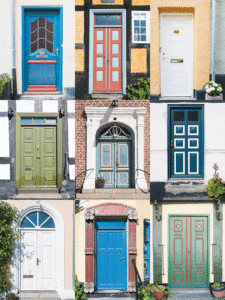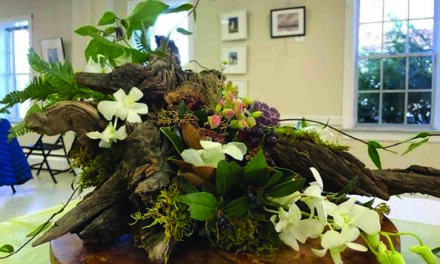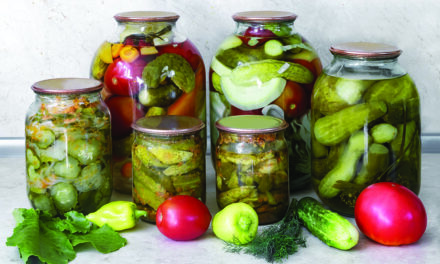The first thing that catches the eye and the last thing seen when leaving is the front door, the centerpiece of the house. 
There are many things that can be done to boost the curb appeal of the house, upgrading the front door is one of those things.
The front door design, condition, and color are extremely important for curb appeal.
Make it the gateway to the home.
While the design may be set with architecture, changing the door’s design and color can make a big difference.
The first step in front entryway design is security.
The condition of the door is second. Is it banged up, discolored, faded or should just be replaced?
Color can make a dramatic change.
Select an inviting and stylish color that will both blend and accentuate the entrance.
Color can help accent tones in the exterior or provide the finishing flourish to a design palette.
The impact might be subtle or direct, formal or playful.
Color influences emotion.
A brighter hue offers energy, while a more subdued one plays up a traditional feel.
A darker hue is more somber; a lighter one tends to be playful.
Using a neutral hue such as brown, black, or gray will provide longevity and adaptability.
Even deep reds and navy blues are classic front door colors that act as neutrals.
If style or exterior changes, neutral hues will easily adapt. Another option is to stain the door instead of painting it.
A wood stain will emphasize the door’s natural material or grain pattern.
A splash of orange, yellow, or lime green makes a bold statement on a front door as do their darker versions burgundy, forest green, and eggplant.
Colors from nature — greens, blues, browns — look like they belong in the landscape and will blend well. A monochromatic color scheme provides a neutral backdrop for accessories such as planters and sconces around the front door.
It can also highlight architectural details as well.
Columns painted in a darker shade frame the front door.
To make a front door pop, paint trim with a contrasting shade.
White is classic, but rich brown tones warm up a cool-colored door.
To complete the redesign set up container gardens. Using selected plants they can be grown in a variety of light conditions, from full sun to partial sun, to full shade.
“Thrill, fill, and spill” is used to describe the arrangement of plants in a container garden.
The idea is to group various plants with similar growing needs using three key components of design to create a fabulous container garden.
This technique creates three layers of interest.
Using the right combination of plants, colors and textures, a stunning container garden will be created.
• Thrill: a unique plan using height and spectacle. It should be the showpiece of the container. Some thriller plants include purple fountain grass, lavender and caladium.
• Fill: this plan is used to fill out space in the container. Use shorter plants or flowers not to distract from the height of the thriller. Colors are added at this step. Petunias, begonias, asters, or impatiens are good choices.
• Spill: is adding plants that spill out of the container. Colors may be added to complement existing colors. Wave petunias, trailing rosemary, sweet potato vine, and ivy are good examples of a spill plan.
• Choose plants that will need about the same type of care and maintenance. Think about how the flower shapes and colors will go together. Think about how the leaves and vines will look with the flowers chosen.
Selecting the container is also a very important decision.
Ceramic, resin, wood, concrete or plaster, the materials vary.
Color needs to be coordinated between the front porch/entryway, door, style and plants.
Consider the overall design of the space.
Lighting can be as simple as a ceiling light to more complex gas flame Charleston sconces. Refreshing the front porch with new lights will add dimension to the design.
A last touch may be to add a decorative doorknocker or doorbell.





